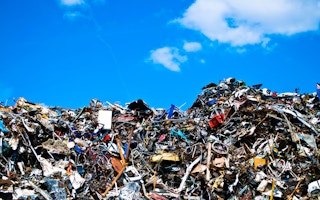The global middle class is projected to grow to nearly 5 billion people by 2030 and almost two thirds of this new middle class will be in Asia. The growing populations population and disposable incomes across the region are expected to increase demand for consumer goods such as cars and electronics, amongst others.
Against this backdrop, experts say that the traditional “take-make-dispose” economic models, where manufacturing, consuming and disposing goods are a linear process, are becoming increasingly unviable. For example, the World Economic Forum estimates that 80 per cent of the US$ 3.2 trillion value of the global consumer goods sector is lost irrecoverably each year due to this wasteful model.
The idea of a ‘circular economy’ is rapidly gaining ground as a promising alternative for businesses to reconcile their need for growth with pressing resource constraints and environmental objectives.
The concept refers to initiatives to restructure manufacturing and product design in a way that the materials used are returned to the value chains, product lifespans are extended through repair and refurbishment, and consumption is reframed in terms of temporary services rather than permanent ownership.
Circular economy thinking is already being widely adopted by business leaders, and proving to be a profitable business approach. For example, a recent study by UN Global Compact and management consulting firm Accenture found that 43 per cent of automotive industry chief executives polled were already looking into the circular economy as a source of competitive advantage. The firm also estimates that circular economy approaches can add as much as US$6 trillion in to global economic growth by 2030.

Peter Lacy, managing director of Accenture’s Strategy and Sustainability Services in the Asia Pacific region
In a recent interview, Peter Lacy, managing director of Accenture’s Strategy and Sustainability Services in the Asia Pacific region, speaks to Eco-Business about the “circular advantage” that businesses can enjoy by embracing circular economy thinking, how governments in Asia can support the growth of the movement, and the challenges and opportunities that this new mode of doing business presents.
What are the advantages of a circular economy over conventional systems, and how can businesses gain from this?
Firstly, better management of natural resources would help save costs, and allow businesses to reduce their operational expenditure. Second, a circular economy allows you to hedge against increasingly expensive and volatile commodities in the marketplace, thereby minimising risk. Third, it forces you to look closely at the use and disposal of products, and the needs of consumers at a more granular level. This creates a greater understanding of the consumer, and you are better able to shape value propositions.
For companies that want to go down the circular economy route, the key thing is to understand which business model is applicable to their own industry and value chain. Examples of possible models include a ‘circular input’ model which involves materials that can be recycled or are biodegradable; the ‘enhanced differentiation’ model in which organisations offer repair, upgrading and refurbishing services for customers; or the ‘sharing platform’ model, which allows users to share goods and services.
Once companies have identified a suitable model, appropriate technologies such as digital and social media, or engineering technology can help them develop their circular economy capabilities.
In a recent article you wrote, you mention that the circular economy revolution is being enabled by the digital revolution, and that Accenture has identified 10 disruptive technologies that are driving this. How will these technologies help manage Asia’s rapid growth, and what are the challenges of scaling them up in Asia?
We looked at more than 100 technologies to come to that pool of 10. The spectrum involves everything from mobile to cloud and social technology, through to hybrid areas like 3D Printing or, more classic engineering technologies like the life and material sciences.
However, not all of them are cutting edge or rare - 3D printing is quite advanced, but things like mobile penetration and online commerce are very prevalent in Asia already. There are lots of opportunities to pick up some of those trends in Asia and drive them towards a circular economy.
Additionally, many circular economy principles such as sharing and resource efficiency are also not alien to Asian economies. I feel positive that much of the technology, infrastructure and principles required for a circular economy can be harnessed in Asia.
“
Rather than relying on this mythical beast of behavioural change, we are far better off creating the right policy structures, and incentivising businesses to innovate products and services that take away the additional labour of behavioural change.
Peter Lacy, managing director, Strategy and Sustainability Services, Accenture
In Europe, the circular economy is aided by legislation and standards such as the End-of-Life Vehicles Directive, which sets clear targets for resource recovery from vehicles, and pushes producers to manufacture new vehicles also with a view to their recyclability. Are similar standards feasible in emerging Asian economies?
Yes, Europe has been helped to a large extent by having the right policy frameworks and the right set of incentives, especially in terms of putting a price – directly or indirectly – on natural resources. In addition to the End-of-Life Vehicles Directive, there is also the Waste Electrical and Electronic Equipment Directive, and legislation on packaging and packaging waste.
I think these policies are absolutely applicable in the Asian economy. You need to find the right policy mix, but I see no reason why it should inhibit competitiveness. If anything, it forces economies as a whole to be more resource efficient, manage risk more effectively, and become more focused on customers’ needs. Countries in Asia that start to move quickly and effectively towards some of these frameworks will enjoy a comparative advantage in the circular economy.
Which Asian economies are further along the road to achieving circular economy frameworks?
Singapore is renowned for focusing on resource efficiency, given its limited resource base and its challenges in waste and water management. The country could look more actively at the circular economy not just as a resource management issue, but also as an area of future comparative advantage, given its status as a major manufacturing base, global port and logistics hub.
One of the biggest opportunities in this area is converting awareness to innovation, and tangible consumer propositions. Singapore can create comparative advantage by incentivising research and development, and creating a framework of policy incentives that put a price on certain commodities, and rewards innovation and efficiency. This will help ensure that Singapore becomes one of the hubs and clusters of innovation on this topic for the region.
The circular economy relies heavily on consumers to be active participants in the recycling or waste return process, but everyday life seems to be dominated by a “throwaway” culture. What behavioural insights can circular economy thinking lend to efforts to address this throwaway culture in everyday life?
I personally believe that although we can rely to a small extent on individual behaviours, there is a real limit to how far you can expect people to modify their behaviours. Rather than relying on this mythical beast of behavioural change, we are far better off creating the right policy structures, and incentivising businesses to innovate products and services that take away the additional labour of behavioural change.
We are creating a value chain that is neutral or even better, restorative on sustainability issues. I prefer the idea of re-engineering the system altogether than relying on individuals at the end of the life cycle.
In addition to successful circular economy businesses, ground up movements are increasingly embracing models of free consumption such as repair cafes and freecycling. How will these movements affect the viability of the circular economy?
Digital technologies and social media have allowed such movements to go to scale at a level that was not possible in the past, but I do not believe that this is going to be a big, game-changing proposition. These platforms are also at an interesting intersection with the movement towards currency innovation, such as BitCoin. The combination of technology, the sharing economy and currency innovations make this a very interesting space to watch in the future.
The circular economy was featured as the topmost trend driving sustainability innovation worldwide in a recent report released by Scandinavian think tank Sustainia. What do you think this says about the potential of the circular economy in shaping a sustainable global future?
It does not surprise me that the circular economy was such a prominent trend. I do think that it is the key concept that unlocks our global ability to drive growth and prospect, and sustain livelihoods in a way that decouples manufacturing processes from natural resource use and environmental impact. When taken to the extreme, and in the long run, I hope it even starts to restore the natural environment.
But I think we also need to be honest and open about the limitations of the approach; that is, it is very focused on resource efficiency and the environment, and does not address all sustainable development challenges. There are much broader socio-economic challenges, and we should not overstate the case of the circular economy. It is by no means a panacea, but a powerful component, and one that we will see a lot more of in the future.





















